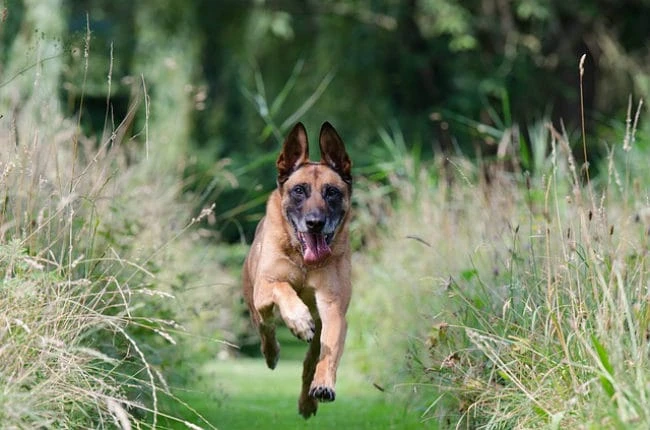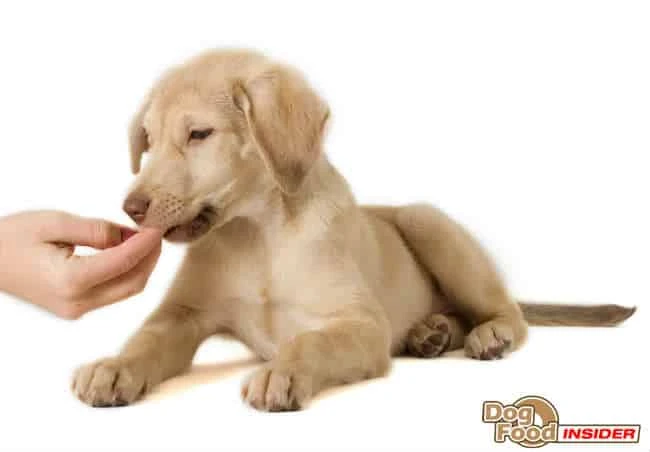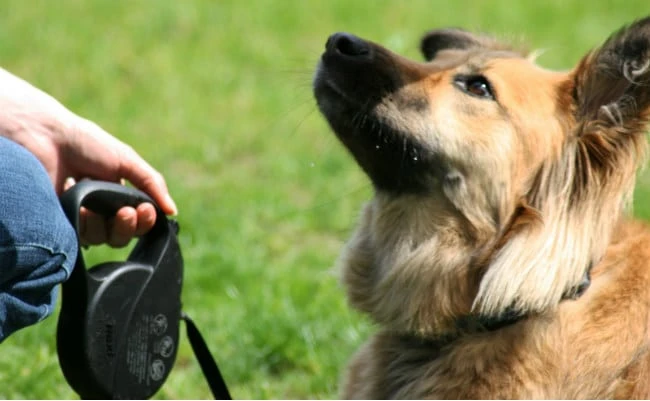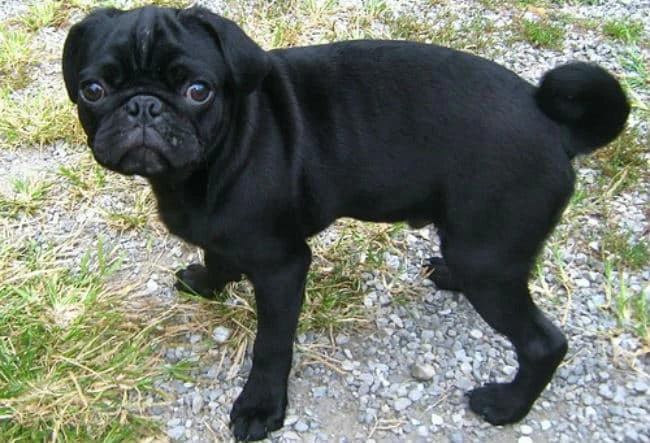Puppy Potty Training, Potty Training Puppies, Potty Training a Puppy
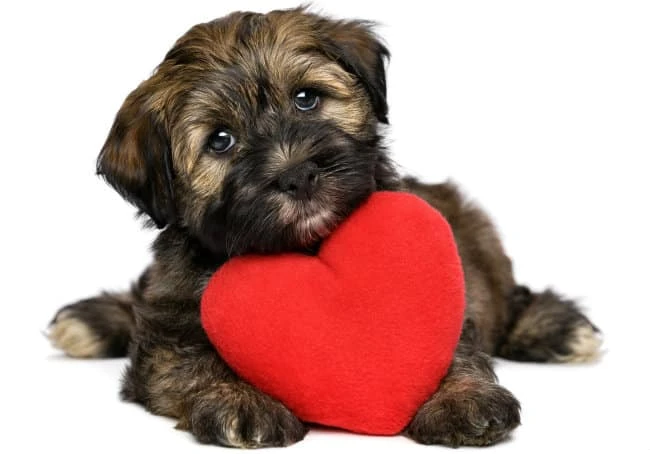
Puppy potty training… This is the first section on potty training puppies where we have provided some of the best free tips to make potty training your puppy and potty training dogs fast and effective.
This section is focused on recognizing the signals when your puppy wants to potty, and we have introduced the litter box.
Potty training a puppy really isn’t difficult at all – it’s about understanding your puppy and teaching him where you want him to potty – this can be outside, which we have covered in our section on house training a puppy.
For house training adult dogs we have covered it in our section on house training a dog.
There are a variety of dog training tools, techniques and methods that you can use when potty training puppies.
We have listed below some of the more common techniques often used.
- Puppy crate training or for an adult dog check out our section on crate training dogs
- Although it is more common to train a puppy to toilet outside – you may live in a Flat on the tenth floor, for this you will either need to use a litter box or paper or use puppy pad training.
Puppy potty training is split into two areas for simplicity
1. When you want your puppy to potty outside covered here
2. When you want you puppy to potty inside – covered on this page
This section will briefly highlight the golden rules that you should follow when potty training your puppy – and will then explain the signals that you should look out for when your puppy wants to go outside – and how you can train your puppy to ring a bell to tell you when he wants to potty!
We will then end the potty training guide with a step by step introduction to litter box training which is used when you and your puppy have no other option but to allow him to potty inside.
Puppy Potty Training – Golden Rules
1. If you have just purchased a new puppy it may be a good idea to have already booked some time off work – this will keep the puppy potty training regime consistent and will enable you to have uninterrupted training time for you and your puppy.
2. By taking some time off of work it will enable you to bond quicker with your puppy – you also need to remember that your pup will be nervous and anxious at his new environment – so be patient and understanding – he’s just a baby!
3. A young puppy will need to potty pretty frequently – normally about 15-20 mins after eating, sleeping and/or playing.
4.Remember we are using reward based training methods – so praise your puppy when he potty where you want him to – in this case the litter box.
In many cases it is quite obvious when your puppy wants to go outside
1. They may bark at the door, paw at you or scratch the door.
2. Your puppy maybe less obvious and only give subtle cues – so subtle that you miss them, and you know what happens next! You guessed it he pees in the House.
3. Every puppy has a signal when they want to potty outside – and it’s up to you to spot the signal – but we can choose and teach your puppy to let you know when he wants to potty outside.
Teach your puppy to let you know when he wants to potty outside
1. Don’t get excited when your puppy paws the door or barks to let you know he wants to potty. If you do then puppy potty training becomes difficult.
Yes it’s good he’s letting you know – but you don’t want to be deafened every-time he wants to potty – or be left with huge grooves in the door!
2. If you want to teach your puppy to let you know when he wants to potty outside – you need to start by choosing a signal.
3. You need to choose a signal that you will be happy with (and can live with) and can use throughout the puppy potty training process.
4. A great tool often used in puppy potty training is a bell – attach the bell to piece of string or a ribbon and then hang it from the door knob.
The string or ribbon should be long enough for your puppy to reach with his paw.
5. Make sure that you use a door that you will use throughout the potty training process – and use the same door every-time.
6. Choose a cue – “wanna toilet” or “want to go potty”. It doesn’t matter but use the same cue every-time.
Now it’s time to teach your puppy to use the bell and let you know when he wants to potty outside.
1. Now you need to attach a leash to your puppy – this is so that you have control over his environment (the same as the house training process) don’t forget to have some treats in your hand as a reward.
2. Take your puppy by his leash and approach the door. Gently take your puppy’s paw in your hand and repeating the cue that you chose “want to potty” or whatever you chose – and then ring the bell with the paw.
3. As soon as you and your puppy have rung the bell immediately take him through the door and outside – and follow the steps we went through in puppy house training.
4. Repeat the process every-day until your puppy rings the bell on his own.
He may rub his body against the bell or use his nose to ring the bell – it really doesn’t matter – its about getting your attention to let him potty outside.
Its important when you are puppy potty training – in fact at any point in the house training process that you check any concerns regarding your puppy’s health with your vet.
Although it is quite common during the early stages in your puppy’s development for your puppy to have diarrhea – due to alterations in their diet – you must check with your vet if the diarrhea continues for 24 hours or more – or their is signs of blood and/or worms in his urine or excrement.
Potty Training Puppies
When your puppy has to potty inside: Using the litter box
As much as we would like to be able to train any puppy in our care to know whether or not you have read the newspaper before your puppy pees on it – even we are not that clever.
So it’s best to go and buy a decent litter box that you can use throughout the puppy potty training process.
Although you can use puppy pads – if your puppy is a chewer they can also shred quite nicely too!
1. A litter box is perfect for a toy breed, for when you have no access to a garden or outside area for your puppy to potty.
2. A litter box is a predefined area – you won’t have litter boxes spread throughout the House (like newspaper) so your puppy won’t get confused where he can potty.
3. A litter box can’t really be torn to pieces like newspaper or puppy pads – so it doesn’t make a very good chew toy!
4. The litter box isn’t ideal for a large breed – but for a small breed it’s perfect.
5. When you purchase a litter box, make sure that you buy one that is big enough when your puppy grows.
6. Don’t share the same litter box that you use for your kitten.
7. Make sure that you clean the litter box every-day – throughout the puppy potty training. Otherwise your House or Flat will start to smell and your puppy will too! Also a puppy will not want to potty in a smelly litter box – would you?
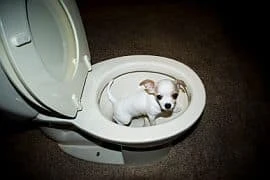 Although when potty training puppies we don’t recommend training a puppy or dog to potty in the House as it may confuse him – sometimes if you live in a Flat or Penthouse you have no option.
Although when potty training puppies we don’t recommend training a puppy or dog to potty in the House as it may confuse him – sometimes if you live in a Flat or Penthouse you have no option.
We included it here as some dog trainers forget that not everyone has access to a garden or outside area that is close by.
For more conventional puppy potty training methods check out our complete step by step guide below.
